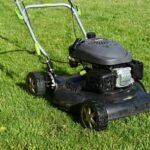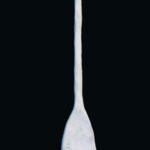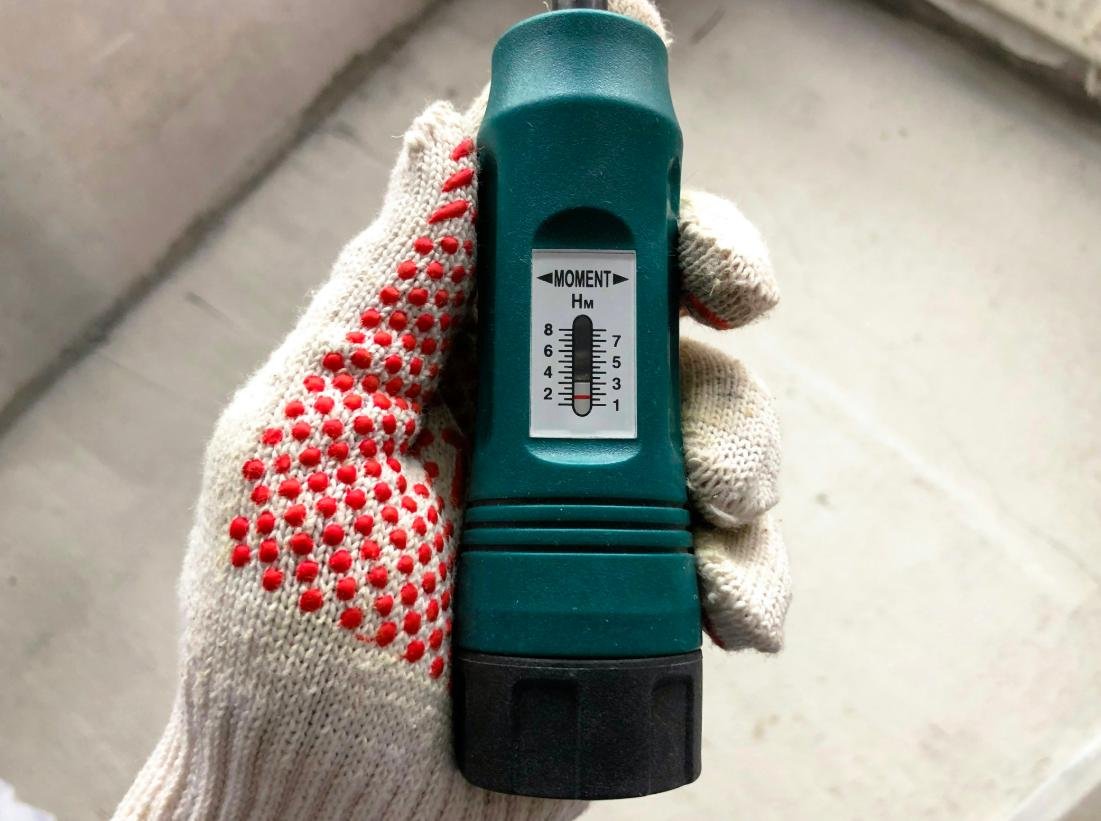Introduction to Impact Wrenches
Impact wrenches are powerful tools designed to provide high torque output with minimal effort from the user. They are equipped with a unique mechanism that delivers quick bursts of rotational force, allowing users to tighten or loosen nuts and bolts effectively. The fundamental operation of an impact wrench revolves around a hammer-and-anvil mechanism, which generates a strong impulse force to achieve the desired torque level. This specialized design makes impact wrenches an invaluable asset in various settings, including automotive repair, construction, and numerous DIY projects.
In automotive repair, impact wrenches play a crucial role in speeding up the assembly and disassembly of wheel lug nuts, engine components, and other parts requiring high torque. Their ability to deliver substantial force rapidly translates to faster turnaround times, significantly enhancing productivity in the workshop. Additionally, in construction sites, impact wrenches are commonly utilized for structural assembly tasks where the fastening of heavy materials is essential. They facilitate the efficient connection of bolts for frameworks and load-bearing structures, thereby ensuring safety and integrity.
DIY enthusiasts also benefit from the use of impact wrenches, especially during home improvement projects. Whether building furniture or repairing appliances, these tools enable quick fastening, allowing individuals to accomplish tasks that would typically require significant manual effort. However, the importance of torque cannot be overstated in these applications. Torque is the rotational force that the tool exerts, and selecting the right torque level is integral to achieving efficient and secure fastening. An understanding of torque requirements not only enhances the performance of impact wrenches but also ensures the longevity of the mechanisms at play.
What is Torque?
Torque, in a mechanical context, refers to the rotational force applied to an object. It is a critical concept in various fields, including engineering and mechanics, as it dictates how effectively a force can cause an object to rotate around an axis. The understanding of torque allows individuals to determine the performance and suitability of tools such as impact wrenches in various applications.
The significance of torque lies in its ability to influence the efficiency and effectiveness of mechanical systems. An adequate amount of torque ensures that fasteners such as bolts and nuts are securely tightened, preventing loosening due to vibration or operational stress. For impact wrenches, which are utilized to deliver high torque output, knowing the required torque specifications for a task is essential to prevent over-tightening or under-tightening, both of which can result in mechanical failure or compromised safety.
Torque is typically measured in either foot-pounds or Newton meters. A foot-pound is defined as the amount of torque resulting from a one-pound force being applied at a distance of one foot from the pivot point. Conversely, a Newton meter is the metric equivalent, where one Newton meter corresponds to one Newton of force applied at a distance of one meter from the pivot. Understanding these units is paramount for professionals selecting tools, as they allow for accurate assessments of torque requirements across different applications.
In conclusion, grasping the concept of torque is vital for the effective operation of impact wrenches and other mechanical tools. It equips users with the necessary knowledge to apply the correct force, ensuring both efficiency and safety in their work. Familiarity with how torque is measured and its significance within mechanical systems will enhance overall performance and tool longevity.
Factors Influencing Torque Requirements
When selecting an impact wrench, understanding the various factors that influence torque requirements is essential for achieving optimal performance and efficiency. One of the primary considerations is the type of fasteners employed in a given application. Different fasteners, such as bolts, nuts, and screws, each possess unique characteristics that demand specific torque levels for effective tightening or loosening. For instance, a heavy-duty bolt used in structural applications will necessitate a higher torque than a standard screw found in lightweight assemblies.
In addition to the type of fasteners, their sizes also play a crucial role in determining the torque required. Larger diameter fasteners typically require more torque to achieve proper clamping force and secure hold, while smaller fasteners can be adequately tightened with lower torque settings. It is important to refer to torque specification charts, which provide guidance on the appropriate torque settings based on the fastener’s size and type.
The materials from which fasteners are made also significantly impact torque requirements. For example, fasteners made from softer materials such as aluminum will require less torque compared to those made from harder materials like stainless steel or high-strength alloys. Additionally, the coating on the fastener can influence the friction between the bolt and nut, thereby affecting the torque needed to achieve the desired preload. Understanding the interplay between the type, size, and material of fasteners is crucial for selecting the right torque setting on your impact wrench.
Moreover, environmental factors such as temperature, humidity, and the presence of contaminants can alter the torque requirements. For instance, rust or dirt may increase friction, necessitating a higher torque setting to achieve effective fastening. By considering these various factors, users can ensure the appropriate torque is applied, thereby enhancing both safety and functionality in real-world applications.
Recommended Torque Levels for Different Applications
Understanding the appropriate torque levels for various tasks involving impact wrenches is crucial for achieving optimal performance and ensuring safety. Torque requirements can differ significantly based on the application, and it is essential to consider these variations when selecting tools. For instance, automotive tire changes typically require a torque range of 80 to 100 foot-pounds for lug nuts. This ensures that the wheels are securely fastened while also allowing for easy removal when changing tires.
When it comes to assembling furniture, the torque levels needed can be considerably lower compared to automotive applications. Most common screws used in flat-pack furniture or cabinetry usually require torque settings between 10 to 20 inch-pounds. This gentler application is critical in preventing damage to the wood or fasteners while achieving a sturdy assembly.
In heavy construction jobs, higher torque levels are often necessary to manage larger bolts and structural components. For instance, structural bolts used in steel framing typically require torque levels ranging from 500 to 1,200 foot-pounds, depending on the size and specifications of the bolts being used. These higher torque levels ensure that components remain securely connected under various loads and conditions.
Additionally, for tasks such as automotive engine assembly, a more precise torque reading is vital; values can range between 20 to 40 foot-pounds for smaller bolts, while main bearing caps may require settings up to 100 foot-pounds or more. Using the correct torque specifications for each application is essential in preventing component failure and ensuring long-lasting results.
Understanding these torque requirements allows users to maximize the efficiency of their impact wrenches while promoting durability in the tasks they undertake.
How to Choose the Right Impact Wrench Torque
When selecting an impact wrench, understanding torque requirements is crucial. The torque produced by an impact wrench directly influences its effectiveness in performing various tasks. Therefore, it is essential to match the gear specifications of the tool with the specific tasks you intend to undertake. Typically, impact wrenches come with torque ratings ranging from 100 ft-lbs to over 1,000 ft-lbs, which cater to different applications, from light maintenance to heavy automotive work.
First, assess the nature of the jobs you will be performing. For lighter tasks, such as changing tires or handling minor automotive repairs, an impact wrench with lower torque (around 200-400 ft-lbs) will sufficing. Conversely, for more demanding tasks that involve fastening or loosening large bolts and nuts, consider a powerhouse model that can deliver upwards of 700 ft-lbs. Understanding the torque requirements of the fasteners used is key, as it helps prevent damage both to the fastener and the workpiece.
Another factor to consider is the size and type of impact wrench that will be most suitable. Impact wrenches typically fall into two categories: cordless and corded. Cordless models offer portability and ease of use, making them ideal for smaller jobs, while corded versions provide consistent power for prolonged tasks. In addition to size, consider the socket size that your task requires. Standard sizes include ½ inch or ¾ inch, and selecting the right size is essential to ensure compatibility with your fasteners.
Furthermore, features such as adjustable torque settings can greatly enhance the versatility of the wrench. This allows the user to select the appropriate torque output based on the specifications of the task at hand. By carefully assessing these factors, you can effectively choose an impact wrench that meets your torque requirements and enhances your efficiency in completing various projects.
Understanding Impact Wrench Specs: What to Look For
When considering an impact wrench, understanding the specifications provided by the manufacturer is crucial for making an informed decision. These specifications often include torque ratings, which indicate the tool’s capability to apply rotational force to nuts and bolts. Torque ratings are typically provided as a range (e.g., 50-700 ft-lbs). This range illustrates the minimum and maximum torque the tool can deliver, allowing users to select an impact wrench that meets their requirements for specific applications.
Another relevant specification is the Impacts Per Minute (IPM), which measures the frequency of impacts produced by the wrench while it delivers torque. A higher IPM indicates a faster and more effective performance, particularly when working with stubborn fasteners or when rapid fastening is required. Typically, construction and automotive tasks benefit from tools with elevated IPM ratings, as these jobs often involve high volumes of work that demand efficiency.
Additionally, it is essential to consider the weight and size of the impact wrench. A lighter, more compact model may be favorable for jobs that require extended use or maneuverability in tight spaces. However, a more robust model might offer higher torque ratings, better suited for heavy-duty tasks. It is advisable to assess the specific tasks you will undertake and choose a model that balances torque requirements with physical usability.
In essence, when selecting an impact wrench, carefully interpreting the specifications provided by manufacturers—such as torque range and IPM—can significantly enhance the effectiveness and suitability of the tool for your needs. Understanding these metrics empowers you to make a purchasing decision that aligns with your project’s demands and overall efficiency.
Common Misconceptions About Torque and Impact Wrenches
Torque is often a misunderstood concept, especially when it comes to the use of impact wrenches. Many individuals assume that the more torque an impact wrench can deliver, the better it is for every task. This perspective, however, is misleading and can lead to improper usage of tools. In practice, applying excessive torque can cause irreversible damage to both the fastener and the material being worked on. Many misconceptions arise from failing to appreciate the specific torque requirements for various applications.
One prevalent myth is that using an impact wrench with higher torque settings will ensure better results. This notion overlooks the importance of matching the tool to the task. For instance, in automotive applications, lug nuts have specific torque requirements. Using an impact wrench set too high may strip threads, break bolts, or create uneven stress on components, ultimately leading to performance issues. Moreover, a tool that delivers excessive torque can jeopardize safety, as it may loosen or damage critical connections.
Additionally, there is a belief that once a fastener is tightened to a certain torque, it is secure and will not loosen over time. This is not necessarily true, especially in dynamic environments where vibration is prevalent. Impact wrenches, while excellent for driving fasteners, can sometimes cause a phenomenon known as “over-torquing” which artificially tightens fasteners beyond their intended limits. Consequently, fastening ranges should always align with manufacturer specifications to ensure longevity and performance.
In understandings of torque and impact wrenches, recognizing that more torque is not synonymous with better performance is crucial. Practitioners must assess specific torque requirements and apply tools accordingly to ensure efficient and safe use of impact wrenches.
Safety Considerations When Using Impact Wrenches
When operating impact wrenches, adhering to safety precautions is paramount to ensure both the operator’s safety and the integrity of the equipment. One of the primary concerns is the risk of over-torqueing, which occurs when excessive torque is applied to a fastener. This can lead to component failure, accidents, and potential injuries. Therefore, it is crucial to understand and adhere to the recommended torque specifications provided by the manufacturer. Utilizing a torque wrench to monitor and set the desired torque levels can effectively prevent over-torqueing.
In addition to managing torque settings, the use of personal protective equipment (PPE) is essential. Operators should be equipped with safety goggles to protect their eyes from flying debris, gloves to ensure a secure grip while minimizing the risk of injury from accidental slips, and ear protection, as impact wrenches can produce high noise levels that may result in hearing damage over time. Choosing appropriate work attire, such as long sleeves and closed-toed shoes, further adds an additional layer of safety.
Moreover, following safe practices while using impact wrenches is critical. Always inspect the tool prior to use, checking for any signs of wear or damage that could affect its performance, including the condition of the socket and drive. It is advisable to work in a well-lit environment to improve visibility and reduce the risk of accidents. Implementing a disciplined approach to tool handling, such as maintaining a firm stance and avoiding distractions during operation, can greatly enhance safety. Understanding the potential hazards associated with impact wrenches and taking proactive measures to mitigate risks will create a safer working environment.
Conclusion and Final Thoughts
Throughout this post, we have delved into the essential aspects of understanding torque requirements for impact wrenches, emphasizing the critical role that these specifications play in various applications. The main focus highlights the significance of torque settings in achieving optimal performance and preventing potential damage to both the tool and the fastener. Having a clear grasp of torque requirements enables professionals and DIY enthusiasts alike to select the appropriate impact wrench for specific tasks.
Additionally, the importance of matching the torque output of an impact wrench to the demands of a particular project cannot be overstated. Utilizing a tool that meets or exceeds the necessary torque specifications is vital in ensuring efficiency and effectiveness while minimizing the risk of over-torquing or under-torquing components. A well-chosen impact wrench not only simplifies the workflow but also promotes safety and longevity of the equipment.
Moreover, the discussion on various factors that affect torque application, including tool design, fastener characteristics, and surface conditions, has provided valuable insights. These factors interact in ways that directly influence the overall effectiveness of the impact wrench being utilized. Understanding these dynamics encourages users to be more thoughtful about their equipment choices, leading to better results in their projects.
Ultimately, a conscientious approach to torque requirements can greatly enhance performance and reliability in a multitude of tasks. By investing time in comprehending these specifications, one can ensure that their impact wrench serves its purpose effectively and efficiently. It is essential for users to remain vigilant in monitoring torque settings, as doing so will contribute significantly to achieving successful outcomes in their applications.






